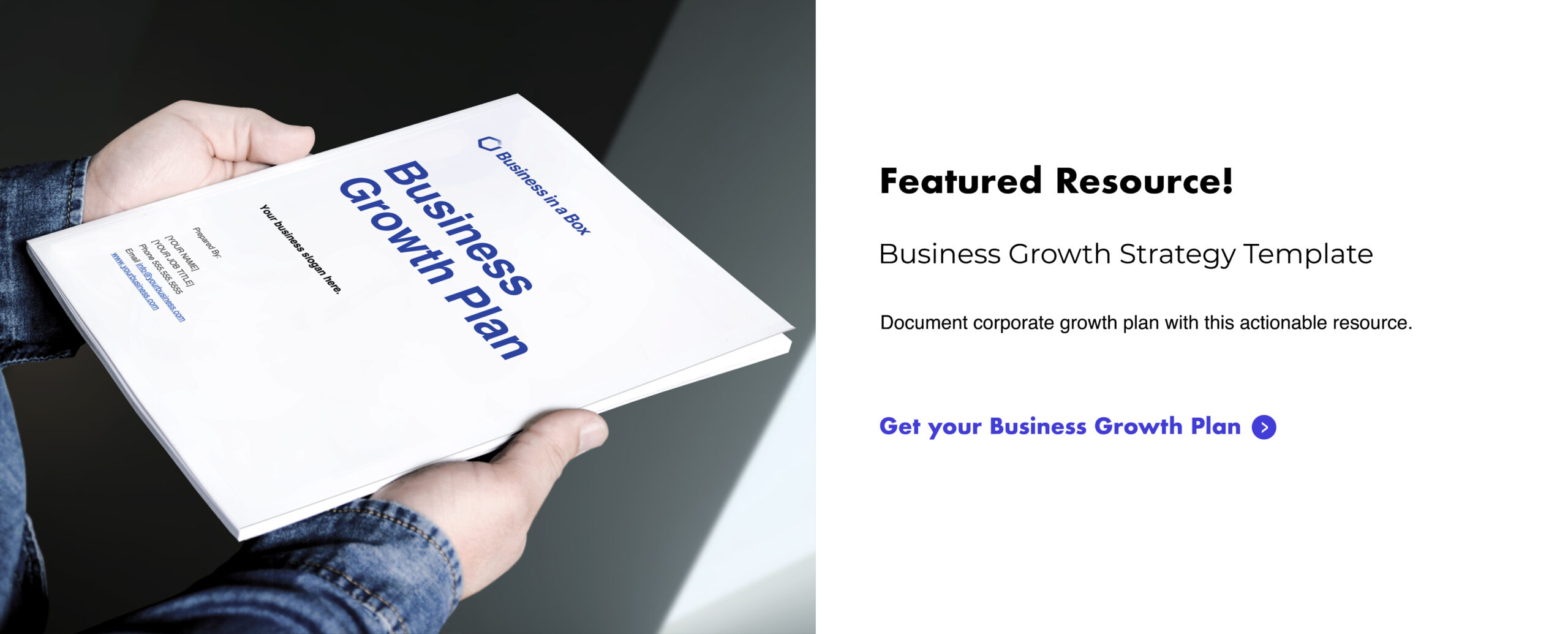Shaping a Growth Strategy: 7 Key Steps That Work
Growth is fundamental to a business’s survival. According to the Bureau of Labor Statistics, approximately 20% of new businesses fail during the first two years of being open, 45% during the first five years, and 65% during the first 10 years. Those numbers are generally consistent across most industries — but they also highlight how important it is to plan for growth from day one.
A concrete growth strategy is more than a marketing strategy, it’s a crucial cog in your business machine. Without one, you’re at the mercy of a fickle consumer base and market fluctuations.
So, how do you plan to grow?
Download Now: Business Strategy For Growth
Business Growth Strategy
A growth strategy allows companies to expand their business. Growth can be achieved by practices like adding new locations, investing in customer acquisition, or expanding a product line. A company’s industry and target market influence which growth strategies it will choose.
Strategize, consider the available options, and build some into your business plan. Depending on the kind of company you’re building, your growth strategy might include aspects like:
- Adding new locations
- Investing in customer acquisition
- Franchising opportunities
- Product line expansions
- Selling products online across multiple platforms
Your particular industry and target market will influence your decisions, but it’s almost universally true that new customer acquisition will play a sizable role.
Not sure what that looks like for your business? Here are some actionable tactics for achieving growth.
How to Grow a Company Successfully
- Use a growth strategy template.
- Choose your targeted area of growth.
- Conduct market and industry research.
- Set growth goals.
- Plan your course of action.
- Determine your growth tools and requirements.
- Execute your plan.
1. Use a growth strategy template [Recommended Tool].
Don’t hit the ground running without planning out and documenting the steps for your growth strategy. We recommend downloading this free Growth Strategy Template and working off the included section prompts to outline your intended process for growth in your organization.
2. Choose your targeted area of growth.
It’s great that you want to grow your business, but what exactly do you want to grow?
Your business growth plan should hone in on specific areas of growth. Common focuses of strategic growth initiatives might include:
- Growth in employee headcount
- Expansion of current office, retail, and/or warehouse space
- Addition of new locations or branches of your business
- Expansion into new regions, locations, cities, or countries
- Addition of new products and/or services
- Expanding purchase locations (i.e. selling in new stores or launching an online store)
- Growth in revenue and/or profit
- Growth of customer base and/or customer acquisition rate
It’s possible that your growth plan will encompass more than one of the initiatives outlined above, which makes sense — the best growth doesn’t happen in a vacuum. For example, growing your unit sales will result in growth in revenue — and possibly additional locations and headcount to support the increased sales.
3. Conduct market and industry research.
After you’ve chosen what you want to grow, you’ll need to justify why you want to grow in this area (and if growth is even possible).
Conducting research on the state of your industry is the best way to determine if your desired growth is both necessary and feasible. Examples could include running surveys and focus groups with existing and potential customers or digging into existing industry research.
The knowledge and facts you uncover in this step will shape the expectations and growth goals for this project to better determine a timeline, budget, and ultimate goal. This brings us to step four…
4. Set growth goals.
Once you’ve determined what you’re growing and why you’re growing, the next step is to determine how much you’ll be growing.
These goals should be based on your endgame aspirations of where you ideally want your organization to be, but they should also be achievable and realistic – which is why setting a goal based on industry research is so valuable.
Lastly, take the steps to quantify your goals in terms of metrics and timeline. Aiming to “grow sales by 30% quarter-over-quarter for the next three years” is much clearer than “increasing sales.”
5. Plan your course of action.
Next, outline how you’ll achieve your growth goals with a detailed growth strategy. Again – we suggest writing out a detailed growth strategy plan to gain the understanding and buy-in of your team.
This action plan should contain a list of action items, deadlines, teams or persons responsible, and resources for attaining your growth goal.
6. Determine your growth tools and requirements.
The last step before acting on your plan is determining any requirements your team will need through the process. These are specific resources that will help you meet your growth goals faster and with more accuracy. Examples might include:
- Funding: Organizations may need a capital investment or an internal budget allocation to see this project through.
- Tools & Software: Consider what technological resources may be needed to expedite and/or gain insights from the growth process.
- Services: Growth may be better achieved with the help of consultants, designers, or planners in a specific field.
7. Execute your plan.
With all of your planning, resourcing, and goal-setting complete, you’re now ready to execute your company growth plan and deliver results for the business.
Throughout this time, make sure you’re holding your stakeholders accountable, keeping the line of communication open, and comparing initial results to your forecasted growth goals to see if your projected results are still achievable or if anything needs to be adjusted.
Your growth plan and the tactics you leverage will ultimately be specific to your business, but there are some strategies you can look to as jumping-off points.
Types of Growth Strategies
- Viral Loops
- Milestone Referrals
- Word-of-Mouth
- The ‘When They Zig, We Zag’ Approach
- In-Person Outreach
1. Viral Loops
Some growth strategies are tailored to be completely self-sustainable. They require an initial push, but ultimately, they rely primarily (if not solely) on users’ enthusiasm to keep them going. One strategy that fits that bill is the viral loop.
The basic premise of a viral loop is straightforward:
- Someone tries your product.
- They’re offered a valuable incentive to share it with others.
- They accept and share with their network.
- New users sign up, see the incentive for themselves, and share with their networks.
- Repeat.
For instance, a cloud storage company trying to get off the ground might offer users an additional 500 MB for each referral.
Ideally, your incentive will be compelling enough for users to actively and enthusiastically encourage their friends and family to get on board. At its best, a viral loop is a self-perpetuating acquisition machine that operates 24/7/365.
That said, viral loops are not guaranteed to go viral, and they’ve become less effective as they’ve become more commonplace. But the potential is still there.
Part of the appeal is that the viral loop flips the traditional funnel upside-down:
Instead of needing as many leads as possible at the top, a viral loop funnel requires just one satisfied user to share with others. As long as every referral results in at least 1.1 new users, the system continues growing.
2. Milestone Referrals
The milestone referral model is similar to the viral loop in that it relies on incentives to kickstart and sustain it. But milestone referrals add a more intricate, progressive element to the process.
Companies that leverage viral loops generally offer a flat, consistent offer for individual referrals — businesses that use milestone referrals offer rewards for hitting specific benchmarks. In many cases, “milestones” are metrics like a number of referred friends.
For example, a business might include different or increasingly enticing incentives that come with one, five, and 10 referrals as opposed to a fixed incentive for each individual referral. A company will often leverage this strategy to encourage users to bring on a volume of friends and family that suits its specific business goals.
The strategy also adds an engaging element to the referral process. When done right, milestone referrals are simple to share with relatively straightforward objectives and enticing, tangible products as rewards.
3. Word-of-Mouth
Word-of-mouth is organic and effective. Recommendations from friends and family are some of the most powerful incentives for consumers to purchase or try a product or service.
The secret of word-of-mouth’s effectiveness lies in a deeply rooted psychological bias all people have — we subconsciously believe the majority knows better.
Social proof is central to most successful sales copywriting and broader content marketing efforts. That’s why businesses draw so much attention to their online reputations.
They know in today’s customer-driven world — one where communication methods change and information is available to all — a single negative blog post or tweet can compromise an entire marketing effort.
Pete Blackshaw, the father of digital word-of-mouth growth, says, “satisfied customers tell three friends; angry customers tell 3,000.”
The key with word-of-mouth is to focus on a positive user experience. You need to grow a base of satisfied customers and sustain the wave of loyal feedback that comes with it.
With this method, you have to focus on delivering a spectacular user experience, and users will spread the word for you.
4. The “When They Zig, We Zag” Approach
Sometimes the best growth strategy a company can employ is standing out — offering a unique experience that sets it apart from other businesses in its space. When monotony defines an industry, the company that breaks it often finds an edge.
Say your company developed an app for transitioning playlists between music streaming apps. Assume you have a few competitors who all generate revenue through ads and paid subscriptions — both of which frustrate users.
In that case, you might be best off trying to shed some of the baggage that customers run into trouble with when using your competitors’ programs. If your service is paid, you could consider offering a free trial of an ad-free experience — right off the bat.
The point here is that there’s often a lot of value and opportunity in differentiating yourself. If you can “zig when they zag”, you can capture consumers’ attention and capitalize on their shifting interests.
5. In-Person Outreach
It might be a while before this particular approach can be employed again, but it’s effective enough to warrant a mention. Sometimes, adding a human element to your growth strategy can help set things in motion for your business.
Prospects are often receptive to a personal approach — and there’s nothing more personal than immediate, face-to-face interactions. Putting boots on the ground and personally interfacing with potential customers can be a great way to get your business the traction it needs to get going.
This could mean hosting or sponsoring events, attending conferences relevant to your space, hiring brand ambassadors, or any other way to directly and strategically reach out to your target demographic in person.
Successful companies plan for growth. They work for it. They earn it. So what’s your plan?
To learn more, check out this business growth plan next.
Written by Sujan Patel @sujanpatel


























